Psoriasis is a pink rash with silvery scales. It is itchy and occurs in millions of people around the world. If a person or his relatives do not have such rashes, it does not mean that they will not appear. It is important to start treatment of the disease in the early stage of psoriasis, and not to start it with a severe stage.
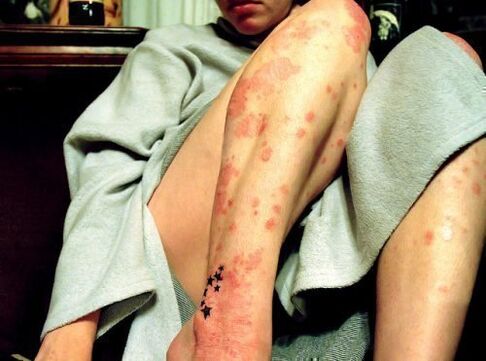
Psoriasis can be inherited, but not in all cases.
Characteristics of the disease
Psoriasis is not an infection, and the cause of its appearance is considered to be a violation of the functions of the immune system. And also the disease can be the result of external factors, skin injuries, stress, alcohol, antibiotics, infections.
Ulcers can cover any part of the body. The rash is especially common on the hands and feet. They also occur on the palms, feet, scalp and nails.
Psoriasis is a chronic disease that has a wavy course. A person may experience periods of reduced rash or cause worsening. Relapses can be caused by various external factors.
Psoriasis does not affect normal life and does not require constant hospitalization. Despite that, it is a serious pathology that brings a lot of inconvenience and limitations.
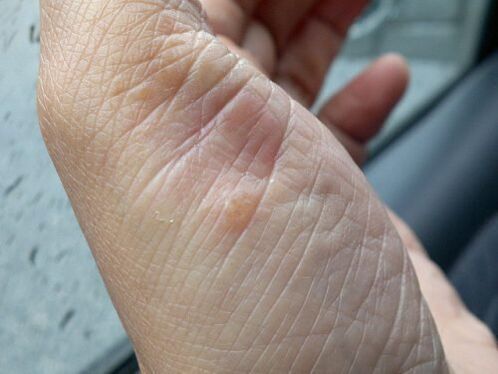
Manifestations of psoriasis can fade and become almost invisible.
Conditional division of psoriasis
There are several forms of psoriasis:
- vulgar;
- seborrheic;
- in the form of a drop;
- palmar-plantar;
- psoriasis of the genitals.
The most common psoriasis is a vulgar form of the disease. In addition, there are light-colored edematous rashes, which are accompanied by severe itching.
There are three degrees of psoriasis, depending on the size of the affected area:
- Easy. About 3 percent of the skin is affected.
- Average. The number of rashes ranges from 3 to 10 percent of the skin surface.
- Heavy. The rash occupies 10 or more percent of the skin surface.
Sometimes the disease attacks the joints. This is the most severe degree, no matter what percentage of the skin is affected by plaque. It can lead to the development of psoriatic arthritis, which is accompanied by pain and swelling in the joint parts of the bones.
There are three stages of psoriasis according to the degree of exacerbation:
- progressive;
- stationary;
- regressively.
Even a doctor may not always be able to recognize psoriasis at some stage. In many cases, special monitoring of disease development is required. This will help determine if the psoriasis is going into remission or not.
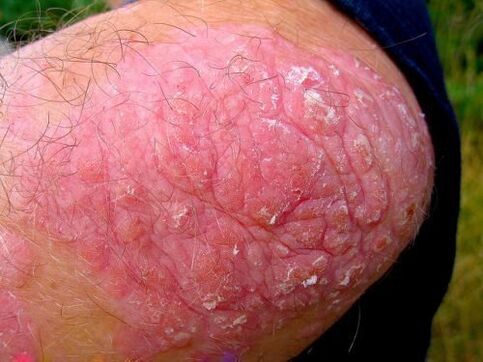
Psoriasis vulgaris has a bright pink color.
Progressive phase
In the initial stage, psoriasis develops fairly quickly. Various rashes appear on the arms, back, buttocks and legs, which grow over time and create plaques. The progression of the disease is characterized by severe itching of the affected areas which become moist and can cause infection.
Early psoriasis is curable. Therefore, it is important to make a correct diagnosis on time. At the first symptoms of psoriasis in the initial stage, you should consult a doctor. Only he can determine the nature of the skin disease and the stage of its development.
You can understand what psoriasis looks like by some signs:
- The rash appears in places where clothing is in close contact with the body. For example, on the arms in the elbow area, below the waist of the pants, elastic band.
- The itchy rash is covered with gray scales.
- If you remove the scale, you can see thin, moist skin underneath.
- The condition of the nails is disturbed, pits appear on them.
Do not use any ointment without consulting your doctor. The use of some medications in the early stages of the disease can lead to the formation of stretch marks, thinning of the epidermis and addiction.
Your doctor will usually prescribe a non-hormonal zinc-based medicine. This is an effective remedy that allows you to relieve itching, reduce the proliferation of skin cells and inflammation, restore the protective functions of the skin and reduce the development of psoriasis in the progressive phase.
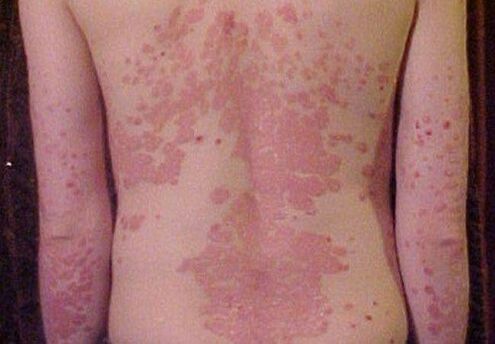
Psoriasis mainly occurs in places where skin and clothing come in contact.
Stationary stage
The previous stage was replaced by the stationary stage of psoriasis. Inflamed nodules do not disappear, but do not grow. Plaques become dry and inflammation decreases.
Tar-containing preparations are very often used to treat the stationary stage of psoriasis. Systemic therapy is sometimes used and the body is exposed to ultraviolet radiation.
Regressive phase
This is the last stage of psoriasis, in which the plaques begin to shrink and slowly disappear. Resorption occurs from the middle of the wound, and small rings and patterns remain on the skin until the end of this phase. The itching and peeling disappear. After the rash on the skin, barely noticeable pigmented areas remain.
This process is the end of the psoriasis cycle, but it is not a complete recovery. The disease can recur at any time. If left untreated, plaques will appear regularly.
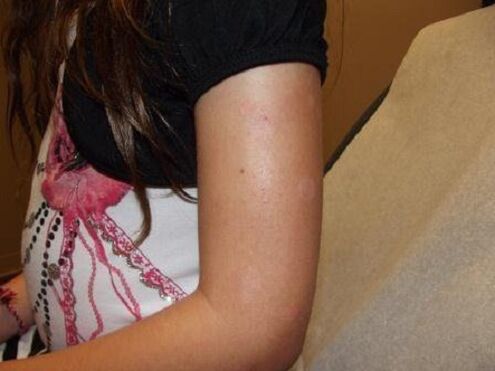
After psoriasis, spots and patterns can remain on the skin.
Treatment and prevention of psoriasis
Every person should monitor their health and pay more attention to the skin:
- Avoid hard washcloths that can scratch your skin.
- It is desirable to use special medicated shampoos. This is especially true of scalp psoriasis.
- Care should be taken to optimally moisturize the indoor air to avoid drying out the skin.
- Avoid scratches, injuries and cuts on the skin.
- It is necessary to adhere to a certain diet that improves the course of the disease.
- One of the main rules of prevention is to refuse alcohol. You should not drink alcohol and quit smoking.
- Wear loose clothing that will not cause rubbing.
A special massage is used to prevent and treat psoriasis. Improves blood circulation so that the skin cleanses faster. The areas of the body around the plaques stretch a few inches and come back. The procedure takes about 15 minutes.
The symptoms of the disease appear in the background of psycho-emotional stress. Therefore, it is important to reduce stress to a minimum. They recommend practicing different methods of relaxation, getting enough sleep and more rest, with the use of herbal preparations and sedatives.
Some patients use folk remedies at home. To do this, use various herbal infusions and decoctions, egg and fat ointments, garlic compresses and lotions before bed. Alternative methods should be used after consultation with a specialist.
Some medications can cause relapse and side effects. They should only be taken as directed by your healthcare provider. Unfortunately, there is no cure that can cure psoriasis one hundred percent forever. You can keep the disease in remission only by choosing the right medications.























